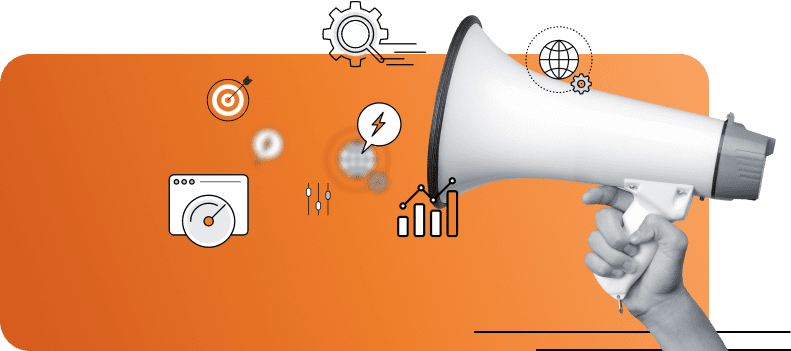In the dynamic world of digital marketing, achieving success often hinges on one key factor, reaching the right audience. For businesses leveraging Google Ads, this means honing in on audience Google segments that will yield the highest returns.
In this comprehensive guide, we’ll explore how to craft a winning campaign by targeting the perfect Google Ads audiences. We’ll cover everything from understanding the audience segment to leveraging Google’s machine-learning capabilities.
Whether you’re a seasoned marketer or just getting started, this guide is designed to provide valuable insights to elevate your Google Ads game.
Understanding the Importance of Audience Targeting
What is Audience Targeting?
Audience targeting involves segmenting your potential customers based on various criteria to ensure your ads reach the right people. This process helps optimize ad spend, improve engagement, and increase conversion rates. Google Ads offers robust tools for Google Ads targeting, allowing you to tailor your campaign to specific audience segments.
Why Audience Targeting Matters
Reaching the right target audience is crucial for maximizing your marketing ROI. Effective audience targeting in Google Ads ensures that your ads are shown to users who are most likely to be interested in your products or services. This not only increases the efficiency of your campaign but also enhances user experience by showing relevant ads.
The Role of Data Segments
Data segments are essential in defining and refining your Google Ads targeting strategy. These segments can include various types of data, such as detailed demographic information, user behavior, and past interactions with your brand. By leveraging data segments, you can create more precise and effective similar audience targeting strategies.
Types of Audience Segments in Google Ads
Detailed Demographic Segments
These segments allow you to target audiences based on detailed demographic criteria such as age, gender, parental status, and household income. These segments help ensure your ads reach the most relevant users.
In Market Segments
In market segments target users who are actively researching or comparing products and services that are similar to yours. This type of in-market targeting is highly effective for driving conversions as it focuses on users who are ready to make a purchase.
Affinity Segments
Affinity segments target users based on their similar interests, hobbies, and lifestyles. These affinity segments help you reach users who have shown a long-term audience interest in specific topics related to your offerings.
Custom Segments
Custom segment allows you to create tailored segments based on specific criteria. You can define your custom segment by combining various attributes such as demographics, audience interests, and behaviors to target the ideal Google Ads audience segment.
Leveraging Google’s Machine Learning for Audience Targeting
Using Audience Signals
These signals are indicators that help Google’s machine learning algorithms understand who your ideal audience is. By providing accurate signals, you can improve the performance of your campaign through better targeting.
Performance Max Campaigns
Performance Max campaigns utilize machine learning to optimize ads across all Google Ads channels, including Search, Display, YouTube, and more. These campaigns use multiple audience targeting requirements to ensure your ads reach the most relevant users.
Dynamic Prospecting
Dynamic prospecting uses machine learning to automatically show your ads to users who are most likely to be interested in your products based on their online behavior. This approach helps attract new customers and drive conversions.
Practical Steps to Add Audience Segments in Google Ads
Creating Custom Segments
To create custom segments in Google Ads, follow these steps:
- Navigate to the Audience Manager in your Google Ads account.
- Click on “Custom Segments” and then “New Custom Segment.”
- Define your criteria by selecting relevant keywords, URLs, and apps people use.
- Save your new segment and apply it to your campaigns.
Adding Audience Segments to Campaigns
- Go to the Campaign or Ad Group Level where you want to add audience segments.
- Click on “Audiences” and then “Edit Audience Segments.”
- Select your desired segments from the available options.
- Save your changes to implement the new audience targeting.
Monitoring and Adjusting Audience Targeting
Regularly monitor your campaign’s performance to ensure your targeting is effective. Use Google Ads’ reporting tools to analyze data and make necessary adjustments to optimize your targeting strategy.
Experimenting with Similar Segments and Audience Expansion
Similar Segments
A-similar segment targets users who have similar characteristics to your existing customers. This feature helps you reach out to new potential customers who are likely to be interested in your products.
Audience Expansion
This expansion allows Google’s algorithms to find additional users who match your selected segment’s profile. This feature broadens your reach while maintaining relevance.
Tips for Optimizing Google Ads Audience Targeting
Regularly Update Your Audience Segments
Keep your segments up to date by regularly reviewing and refining them based on the latest data and trends. This ensures your targeting remains relevant and effective.
Use Multiple Audience Targeting Methods
Combine various Google Ads audience targeting methods, such as demographic targeting, custom segments, and in market segments, to create a comprehensive strategy that maximizes reach and relevance.
Leverage A/B Testing
Conduct A/B testing to compare different segments and targeting strategies. This helps identify the most effective approaches and optimize your search engine marketing campaigns accordingly.
Common Pitfalls and How to Avoid Them
Overlooking Detailed Demographics
Failing to use more detail in demographic segments can result in less effective targeting. Make sure to leverage all available data to refine your segments.
Ignoring Audience Signals
Neglecting to provide accurate signals can hinder the performance of your campaigns. Always ensure your signals are well-defined and relevant.
Not Monitoring Campaign Performance
Regularly monitor your campaign’s performance to identify areas for any improvement. Use Google Ads’ reporting tools to track key metrics and adjust your Google Ads targeting strategy as needed.
The Future of Audience Targeting in Google Ads
Advancements in Machine Learning
With continuous advancements in machine learning, Google Ads audience targeting is becoming increasingly sophisticated. These improvements will enable even more precise and effective targeting strategies.
Integration with New Platforms
Google Ads is likely to integrate with new platforms and data sources, providing marketers with more opportunities to reach their target people across various channels.
Enhanced Personalization
Future developments in audience targeting will focus on providing even more personalized in-market ad experiences, further enhancing user engagement and conversion rates.
Mastering Google Ads audience targeting is essential to create successful campaigns that reach and engage the right users.
By understanding how various audience segments work and leveraging Google’s machine-learning capabilities, you can optimize your targeting strategy and achieve your business campaign goals.
Remember to regularly update your audience segments, use multiple targeting methods, and conduct A/B testing to continuously improve your campaigns.
For those looking to stay ahead in the competitive in-market digital marketing landscape, mastering audience targeting with Google Ads is not just an option, it’s a necessity.
Ready to take your Google Ads campaigns to the next level? Start implementing these strategies today and watch as your campaign performance soars!









